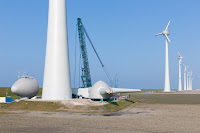Ναι, μπορείτε ενδεχομένως να εξοικονομήσετε τσιμέντο όταν χρησιμοποιείτε σκυρόδεμα εξαιρετικά υψηλών επιδόσεων (UHPC) σε σύγκριση με το κανονικό σκυρόδεμα. Ακούστε γιατί:
1. Υψηλότερη αντοχή
Το UHPC επιτυγχάνει συνήθως σημαντικά υψηλότερη αντοχή σε θλίψη από το τυπικόσκυρόδεμα. Αυτή η αυξημένη αντοχή επιτρέπει τη μείωση της περιεκτικότητας σε τσιμέντο, διατηρώντας παράλληλα την επιθυμητή απόδοση. Χρησιμοποιώντας λιγότερο τσιμέντο, μπορείτε να εξοικονομήσετε κόστος υλικών και να μειώσετε τις περιβαλλοντικές επιπτώσεις που σχετίζονται με την παραγωγή τσιμέντου.
2. Ενισχυμένη συσκευασία σωματιδίων
Το UHPC ενσωματώνει μεγάλο όγκο λεπτόκοκκων σωματιδίων, όπως ο πυριτικός καπνός, ο οποίος βελτιώνει τη συσκευασία των σωματιδίων εντός του μείγματος. Αυτή η βελτιστοποιημένη συσκευασία μειώνει την ποσότητα τσιμεντόπαστας που απαιτείται για την πλήρωση των κενών, με αποτέλεσμα την αποδοτικότερη χρήση των τσιμεντοειδών υλικών.
3. Χαμηλότερη αναλογία νερού προς τσιμέντο
Το UHPC απαιτεί γενικά χαμηλότερο λόγο νερού προς τσιμέντο σε σύγκριση με το τυπικό σκυρόδεμα. Η μειωμένη περιεκτικότητα σε νερό ενισχύει την αντοχή και την πυκνότητα του μείγματος, ενώ ελαχιστοποιεί τη συρρίκνωση και βελτιώνει την ανθεκτικότητα. Με τη μείωση της περιεκτικότητας σε νερό, μπορεί να μειωθεί η ποσότητα του απαιτούμενου τσιμέντου, οδηγώντας σε εξοικονόμηση κόστους.
4. Συμπληρωματικά τσιμεντοειδή υλικά (SCM)
Τα σκευάσματα UHPC συχνά ενσωματώνουν συμπληρωματικά τσιμεντοειδή υλικά, όπως πυριτική άχνη. Τα υλικά αυτά συμβάλλουν στη συνολική περιεκτικότητα του μίγματος σε τσιμέντο, μειώνοντας παράλληλα την απαιτούμενη ποσότητα τσιμέντου Πόρτλαντ. Η χρήση SCMs μπορεί να οδηγήσει σε εξοικονόμηση κόστους, ενώ παράλληλα βελτιώνει τα χαρακτηριστικά απόδοσης του σκυροδέματος.
5. Μείωση του τσιμέντου
Με τη χρήση ενός από τα ειδικά μας συνδετικά υλικά UHPC, μπορεί να εξοικονομηθεί έως και50% τσιμέντου Πόρτλαντ. Οι εργαστηριακές και πρακτικές δοκιμές μας επιβεβαίωσαν σαφώς την εξοικονόμηση χωρίς να αλλάζουν οι ιδιότητες επεξεργασίας και οι τεχνικές ιδιότητες σε σύγκριση με το τσιμέντο Πόρτλαντ.
Το σκυρόδεμα με χαμηλό ποσοστό τσιμέντου μπορεί να επεξεργαστεί από οποιαδήποτε μονάδα ανάμιξης σκυροδέματος παγκοσμίως χωρίς προβλήματα.
6. Αραιότερα στοιχεία
Οι ανώτερες ιδιότητες αντοχής και ανθεκτικότητας του UHPC επιτρέπουν τον σχεδιασμό λεπτότερων προκατασκευασμένων στοιχείων σε σύγκριση με το τυπικό σκυρόδεμα. Τα λεπτότερα στοιχεία απαιτούν μικρότερο όγκο σκυροδέματος και, κατά συνέπεια, λιγότερο τσιμέντο. Αυτή η μείωση της χρήσης υλικών οδηγεί σε εξοικονόμηση κόστους.
κατανάλωση τσιμέντου στα τυποποιημένα σκυροδέματα, άλλοι παράγοντες, όπως ο συγκεκριμένος σχεδιασμός του μίγματος, τα επιθυμητά κριτήρια απόδοσης και οι απαιτήσεις του έργου, μπορούν να επηρεάσουν την πραγματική εξοικονόμηση τσιμέντου που επιτυγχάνεται. Η σωστή βελτιστοποίηση του σχεδιασμού μίγματος, η προσεκτική εξέταση των ιδιοτήτων του υλικού και η συνεργασία με έναν έμπειρο προμηθευτή σκυροδέματος ή μηχανικό είναι ζωτικής σημασίας για την επίτευξη των επιθυμητών αποτελεσμάτων και τη μεγιστοποίηση της εξοικονόμησης κόστους.


































